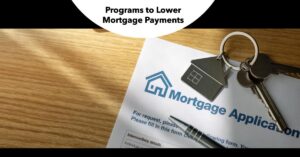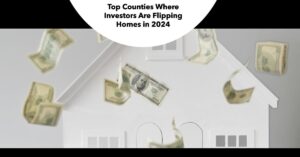If you are struggling to make your mortgage payments, there are several programs available to help you lower your monthly payment. These programs can help you save money and avoid foreclosure.
Programs to Lower Mortgage Payments
Government Programs
The federal government offers several programs to help homeowners lower their mortgage payments. These programs are available to homeowners who are experiencing financial hardship, such as a job loss or a medical emergency.
- Home Affordable Refinance Program (HARP): HARP allows homeowners who are underwater on their mortgage to refinance into a new loan with a lower interest rate. According to Freddie Mac, over 1 million homeowners have refinanced through HARP. To be eligible for HARP, you must have a mortgage that is backed by Fannie Mae or Freddie Mac and you must be current on your mortgage payments. Learn more about HARP
- Home Affordable Modification Program (HAMP): HAMP allows homeowners who are at risk of foreclosure to modify their mortgage terms. Modifications can include reducing the interest rate, extending the loan term, or forgiving a portion of the principal balance. Fannie Mae reports that over 1.8 million homeowners have received assistance through HAMP. To be eligible for HAMP, you must be experiencing financial hardship and you must have a mortgage that is backed by Fannie Mae or Freddie Mac. Learn more about HAMP
Non-Government Programs
In addition to government programs, there are also several non-government programs available to help homeowners lower their mortgage payments. These programs are typically offered by mortgage lenders and non-profit organizations.
- Mortgage forbearance: Mortgage forbearance allows homeowners to temporarily stop making their mortgage payments. Forbearance is typically granted for a period of 3 to 6 months, but it can be extended in some cases. The Consumer Financial Protection Bureau recommends contacting your mortgage servicer as soon as possible if you are having trouble making your mortgage payments. Learn more about mortgage forbearance
- Mortgage modification: Mortgage modification allows homeowners to change the terms of their mortgage. Modifications can include reducing the interest rate, extending the loan term, or forgiving a portion of the principal balance. The Federal Housing Finance Agency provides information on mortgage modification options for homeowners with Fannie Mae or Freddie Mac-backed mortgages. Learn more about mortgage modification
Other Options
In addition to the programs listed above, there are other options available to homeowners who are struggling to make their mortgage payments. These options include:
- Payment assistance programs: Some government and non-profit organizations offer payment assistance programs to help homeowners catch up on their mortgage payments. Find a payment assistance program in your area
- Debt consolidation: Debt consolidation can help you combine your multiple debts into a single loan with a lower interest rate. This can free up some of your monthly cash flow to help you make your mortgage payments. Learn more about debt consolidation
- Selling your home: If you are unable to make your mortgage payments and you are not eligible for any assistance programs, you may need to consider selling your home. Get a free home valuation
How to Choose the Right Program to Lower Mortgage Payments
Understanding Your Options:
There are several approaches to reducing your mortgage burden. Each has its pros and cons, depending on your situation:
- Refinancing: This involves replacing your current mortgage with a new one, ideally with a lower interest rate or a longer loan term. A lower rate reduces your monthly payment, while a longer term spreads the loan out, lowering the monthly payment but increasing the total interest paid.
- Recasting: Similar to refinancing, but instead of a new loan, you recalculate the remaining payments based on the current loan balance and interest rate. This can significantly lower your monthly payment but doesn't change the total interest paid.
- Loan Modification: If you're facing financial hardship, your lender may allow you to modify your loan terms. This could involve lowering the interest rate, extending the loan term, or even reducing the principal balance.
- Reducing Mortgage Insurance (PMI): If your loan-to-value ratio (LTV) falls below a certain threshold (usually 80%), you may be able to cancel PMI, which reduces your monthly payment.
- Lowering Property Taxes or Homeowners Insurance: While you don't directly control these costs, you can shop around for better rates or contest your property tax assessment to potentially lower your monthly housing payment.
Choosing the Right Program:
Consider these factors when deciding:
- Financial Situation: Are you looking for short-term relief or a long-term solution? Can you afford the closing costs associated with refinancing?
- Loan Details: What is your current interest rate? How much time is left on your loan?
- Future Plans: Do you plan to stay in your home for a long time?
Getting Help:
A HUD-approved housing counselor can offer free guidance on your specific situation. They can explain the pros and cons of each option, help you navigate the application process, and ensure you choose the program that best suits your needs.
By understanding your options and seeking professional advice, you can make an informed decision and find the best program to lower your mortgage payments and achieve a more manageable housing cost.
Conclusion
If you are struggling to make your mortgage payments, there are several programs and options available to help you lower your monthly payment. It is important to weigh the benefits and risks of each option before making a decision. You should also speak with a housing counselor to get personalized advice about your options.
ALSO READ:
- My Mortgage is Too High: What Can I Do?
- Mortgage Rate Predictions for 2025: Expert Forecast
- Mortgage Rates Predictions for Next 2 Years
- Mortgage Rate Predictions for Next 5 Years
- Will Mortgage Rates Ever Be 3% Again: Future Outlook
- Summer 2024 Mortgage Rate Predictions for Home Buyers
- Will Mortgage Rates Ever Be 4% Again?



